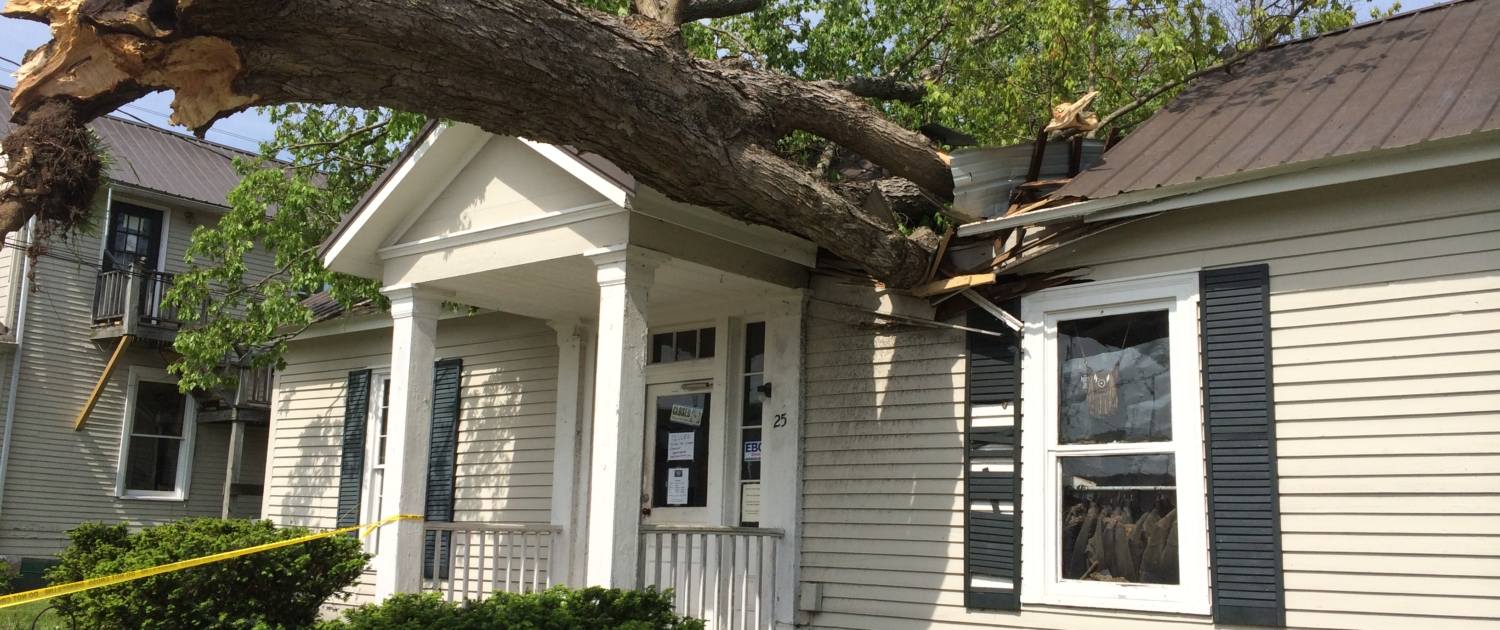When severe storms strike Kansas City, they can leave a trail of damaged trees and potential hazards. This guide will help you handle storm-damaged trees safely and effectively.
Immediate Safety Priorities
The moments after a storm are critical. Your first priority should be safety:
- Stay clear of any downed power lines or trees touching utility lines
- Contact Evergy immediately at 888-544-4852 for downed lines
- Keep children and pets away from damaged areas
- Document damage with photos for insurance purposes
- Don’t attempt to handle large branches or trees yourself
Assessing the Damage
Once it’s safe to inspect your property, evaluate tree damage using these categories:
Minor Damage
Small broken branches and torn leaves typically don’t threaten tree health. These issues often heal naturally with proper pruning cuts.
Significant Damage
Split branches, partially uprooted trees, or severe leaning require professional evaluation. The Missouri Department of Conservation offers guidance on identifying serious tree damage.
Critical Damage
Trees with split trunks, major crown loss, or complete uprooting usually can’t be saved. These situations need immediate professional attention to prevent further property damage.
Professional Response
The Kansas City Parks and Recreation Forestry Division recommends contacting certified arborists for storm damage because they:
- Have proper safety equipment and insurance
- Know correct pruning and removal techniques
- Can assess structural stability
- Understand local regulations and permit requirements
- Provide emergency response services
Recovery Steps
After securing immediate hazards, focus on recovery:
Documentation
- Take detailed photos for insurance claims
- Contact your homeowner’s insurance provider
- Keep records of all professional services
Clean-up Priorities
- Clear immediate hazards from walkways and driveways
- Remove damaged branches that could fall
- Address hanging or split limbs
- Plan for complete removal if necessary
Prevention Strategies
While you can’t prevent storms, you can prepare your trees:
Regular Maintenance
Schedule annual inspections with certified arborists to identify potential weaknesses before storms strike.
Proper Pruning
Remove dead or weak branches during regular maintenance. The K-State Research and Extension offers guidance on proper pruning techniques.
Root Care
Protect root systems from damage during construction or landscaping projects. Healthy roots provide better stability during storms.
When to Call for Help
Contact a certified arborist immediately if you notice:
- Split or broken major limbs
- Uprooted or leaning trees
- Damaged trees near structures
- Any situation involving power lines
- Trees blocking access to your property
Local Resources
Kansas City residents can access several emergency resources:
- Emergency Services: Call 911 for immediate dangers
- Power Lines: Contact Evergy at 888-544-4852
- City Services: Call 311 for non-emergency assistance
- Tree Permits: Check KCMO’s tree ordinances for removal requirements
Long-term Recovery
After addressing immediate hazards:
- Evaluate soil stability around damaged trees
- Consider replacement options for removed trees
- Review your landscape for storm-resistant species
- Update your emergency response plan
Key Takeaways
- Safety always comes first
- Document everything for insurance
- Work with certified professionals
- Focus on prevention through regular maintenance
- Keep emergency contact numbers readily available
Remember, while storm damage can be devastating, proper response and professional help can minimize long-term impacts on your property and remaining trees.
Frequently Asked Questions
First, ensure safety by staying away from downed power lines and damaged trees. Document damage with photos, and contact professionals for assessment and removal if needed.
Tree damage is an emergency when it threatens structures, blocks access, involves power lines, or shows signs of imminent failure like split trunks or severe leaning.
Many homeowner's insurance policies cover tree removal if the tree damages insured structures. Document everything and contact your insurance provider promptly.
Regular maintenance, proper pruning, and annual professional inspections help identify and address potential weaknesses before storms strike.
For safety reasons, only attempt to remove small branches. Large branches, hanging limbs, or any situation involving power lines requires professional help.
